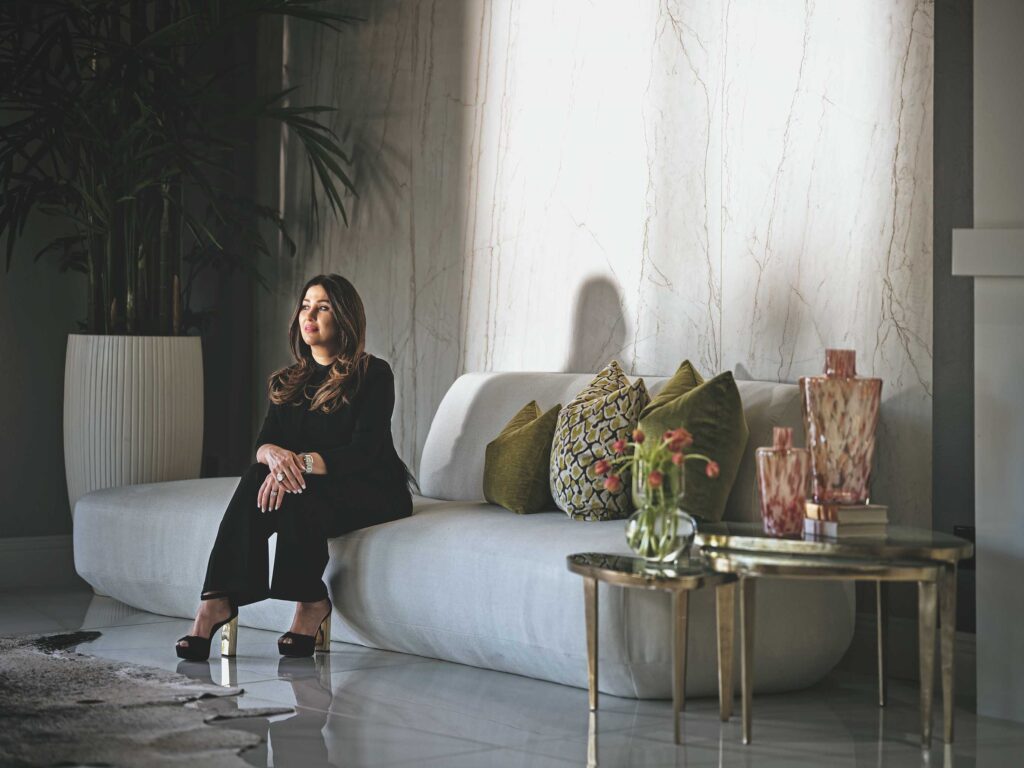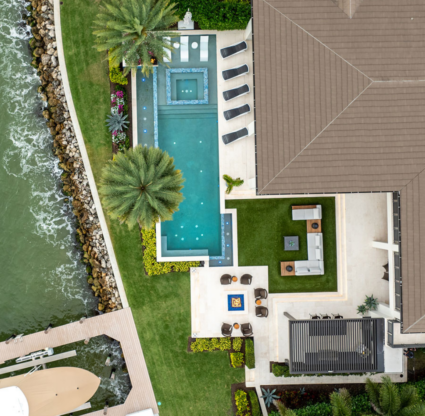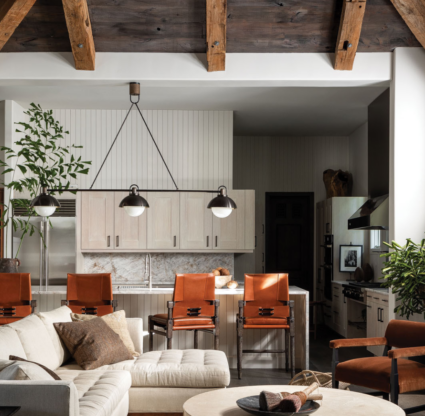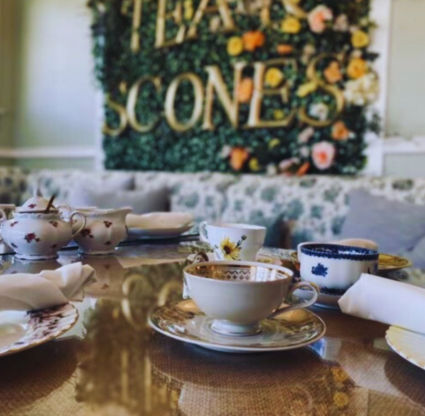In design school, Leili Fatemi had a teacher whose catchphrase was, “Where was your brain?” Though it seemed a rather harsh criticism of his students’ early work at the time, it was a simple push to get them to think creatively. She would later learn that there were many more ways to apply that straightforward probe throughout her process. After all, the brain has an awful lot to do with design. “Design is all about visual communication and understanding people and the psychological part of the job,” the Bonita Springs-based designer says.
Fatemi translates thoughts and feelings into a practical and emotionally nourishing way of living that requires aesthetic creativity and a nuanced approach to mental wellness and physical comfort. “Design is a kind of art, but it’s more than that,” she says. In her studies, which have taken her around the world, the science of design was emphasized as much as the artistry. Mathematical ideals of proportion, scale, contrast and balance all come into play when Fatemi conceives a space. The soul of an interior emerges at the sweet spot junction of science, creativity and human connection, she says.
The designer’s projects are often laced with earthy elements. “It goes back to human nature. We don’t get tired of trees, wood, water,” she says. But, everything in her work—even the organic nods—is woven with contemporary flair. Walnut may appear as an arresting 3D geometric wall treatment, a flock of brass bird figures may fly up a towering entryway, or a gnarled wood console could be paired with a chrome-and-crystal spiraling chandelier.
Fatemi believes strong design goes beyond furniture selection and placement to consider the space in its entirety. She layers in texture through 3D shapes, plush materials and artful wall treatments—an assemblage of hexagonal mirrors above a tub here, a textured horizontally striped wallpaper pointing to the Caloosahatchee River views there. “I like to create well-balanced spaces by using forms, textures, patterns and lines,” she says.
Still, mathematical proportions, luxe furnishings and artful details don’t mean much if personal preferences aren’t considered. “Each of us is a different individual with our own preferences, backgrounds, cultures; we have our own reactions to any physical object or emotion or to any color, pattern or space,” Fatemi says. The client’s lifestyle is equally important. “One family we’re working with is very tall, so everything is raised,” she notes. For a bodybuilder female client, Fatemi channeled the woman’s strength and femininity into a contemporary space that blends dark colors and brawny textures with soft, curved furnishings.
Collaboration is at the heart of innovative, artful design, and Fatemi always considers the architectural and engineering elements of a home. She likes working with the builder and architect from the onset to design spaces that intuitively fit homeowners’ needs. “I like architectural elements, like big tall windows or high ceilings that bring in natural light or nature,” she adds.
Fatemi likes to create architectural details that speak to the client in every project. For a German couple—a pilot and an artist who love Leonardo da Vinci—Fatemi referenced the polymath’s Vitruvian Man drawing for a series of cubes that climb up the wall above an entry doorway. A bachelor received a bar with an arm of rectangular blue LEDs that recall the narrow bricks on the exterior of a modern home Leili designed abroad, inspired by the look of stacked papers. In a Fort Myers property, where the client wanted everything (down to the accessories) to be custom, Fatemi designed a geometric foyer rug that follows the shape of the tile, so the rug appears as an extension of the floor. The piece blends the greens, grays and creams seen throughout the home in an ombré arrangement, setting a striking scene from the entrance. “I love to leave something for my clients that none of their friends have, an element that’s unique to them and doesn’t feel like something you order from a catalog,” she says. Fatemi references interior designer Kelly Wearstler and her zeal for funky, layered patterns, colors and textures that may initially seem shocking but ultimately meld into inspired spaces. “She has a free soul,” Fatemi says. “She’s not afraid of creating something that is completely different.”
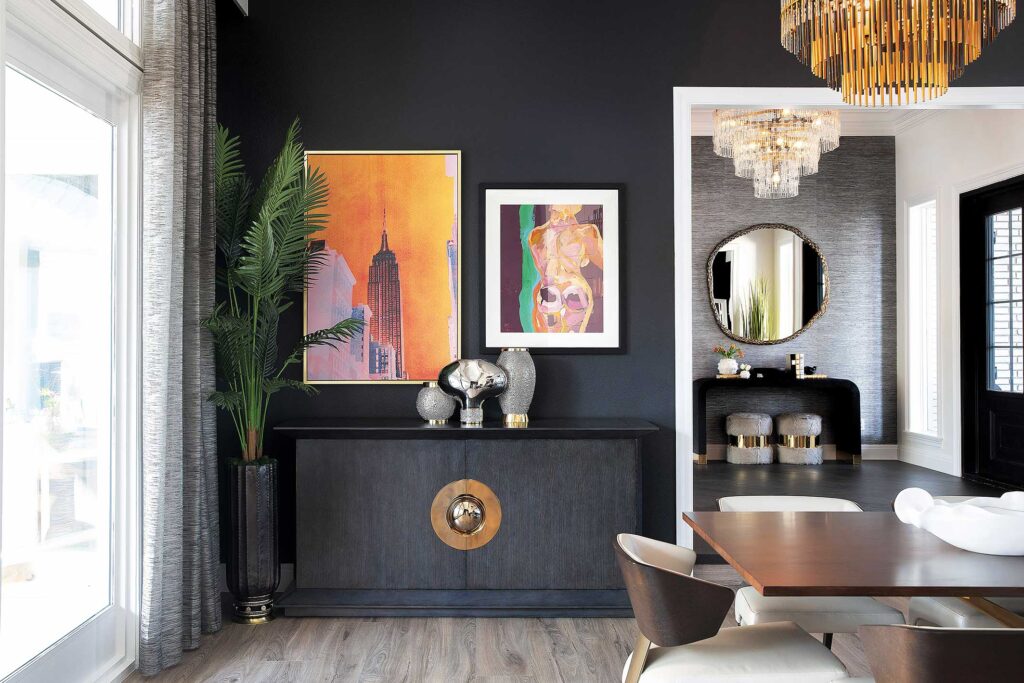
Despite Fatemi’s penchant for experimentation and originality, she believes good design is timeless, not rooted in trends. “Trends come in and out; they will be gone,” she says. Though, that doesn’t mean you can’t be playful. The designer simply recommends using eccentric motifs and colors in small doses or with elements that can be easily replaced, like an accent chair, a feature wall or throw pillows. “If the homeowner gets tired of it or the trend goes away after two years, they’re not stuck with it,” she says.
While the client always leads, Fatemi aims to expand our design lexicon and break preconceived notions. She encourages people to think past the general ideas around luxury to promote creativity and sustainability. “Luxury is often labeled under certain materials or certain brands,” Fatemi says. “But luxury has a huge meaning.” She thinks beyond the superficial allure to the intention, impact, process, originality and artfulness of a material or object, and how it fits the user. “Historically, luxury has been about providing comfort,” she adds.
Social media can present another variable in the artistic equation: a kind of uniformity and reliance on specific brands, materials, patterns or colors that can limit the expression of personal style. “It’s refreshing when you see someone using a material that’s not often used or a floor plan that hasn’t been repeated everywhere. Creativity comes with freedom,” she says.
Fatemi is optimistic about the possibilities technology brings, with elements like glass that frosts with the press of a button and touchless, wireless and customizable appliances. In her office, she already offers 3D, virtual modeling to help clients see a space before anyone can regret a design decision. Beyond conveniences, Fatemi says technology presents new opportunities for design to lead on sustainability. If clients are open to it, interior designers can take the lead on using green, recycled or environmentally friendly materials that have been overlooked as low-end, like faux leather, cork and wood-like synthetics. “Design is about creating solutions, beauty, functionality and comfort with a creative approach,” she says.

